Whether you’re car camping, vanlifing or RV’ing — there are many different places out there to spend a night. This guide makes an effort to detail them all. I wish I had this article when I began my journey. If I did it would have saved me thousands of miles of unnecessary driving in search of sleeping spots. Regardless, my toil is your gain, so read on.
Truck Stops
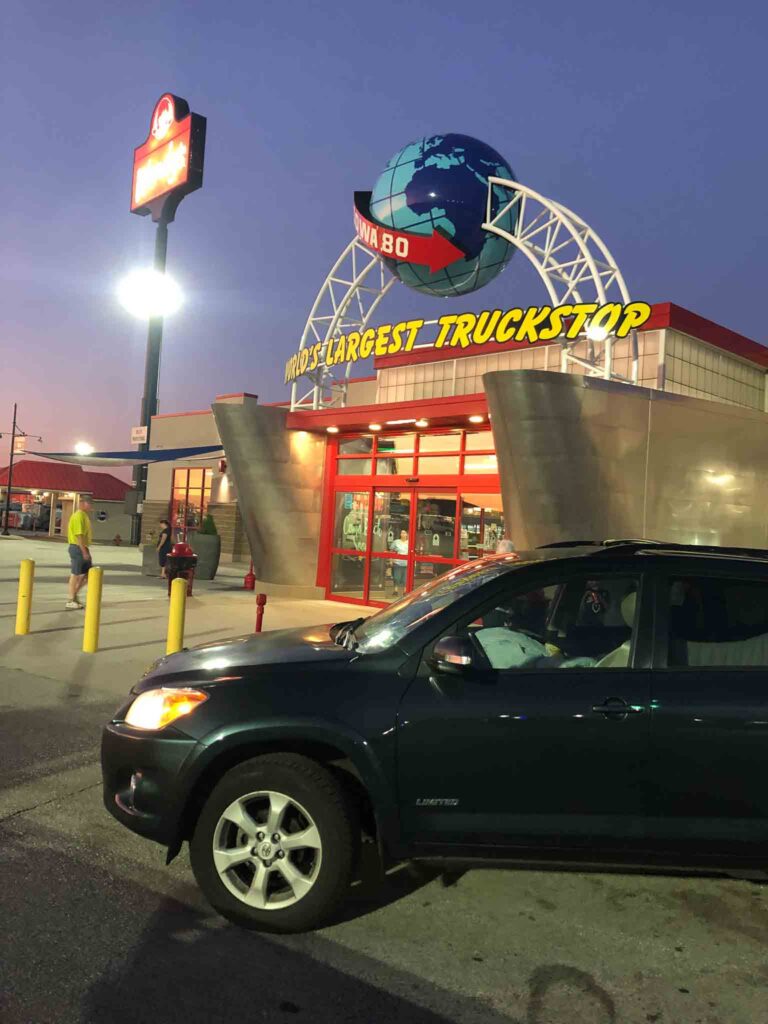
Truck stops in the United States are under the names of Pilot Travel Center, Flying J Travel Center, Love’s Travel Stop, or TA Travel Center. They are good for a single night, sometimes two. You can find these along all interstate routes and some smaller highway routes. When sleeping here, don’t sleep in the semi-truck area and instead sleep in the car area. RV spots may be available too. They are safe and well-lit; and have 24-hour gas, bathrooms and shopping. I find these by typing “truck stops,” “travel plazas,” or one of the brand names into Google Maps.
In all the truck stops I’ve stayed in, the only one where I got a knock was near Tacoma, Wash. That region has a large and sometimes troublesome vehicle-dwelling population. Abuse has led to several blanket bans there. Despite that, it was only 5 a.m. when they woke me up, and I got enough sleep to continue driving. You’ll find the vast majority are friendly to travelers sleeping overnight.
Rest Areas
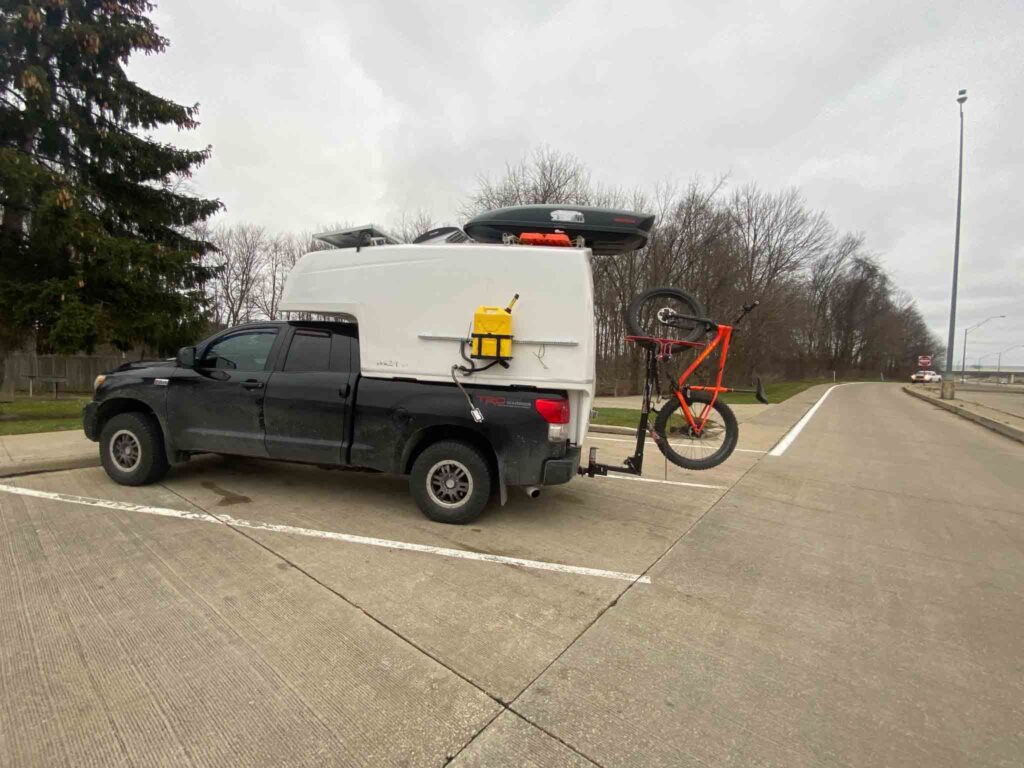
Rest areas are along interstates and many highways. Some say they’re a mixed bag, but I’ve found most of them to be fine.
Some states have rules saying “No parking longer than 2 hours” or “No overnight parking at all.” Those regulations make it easier for police to deter troublesome people and extended stays. When using rest areas to rest, you’ll find limited enforcement. But, there are places where it’s taken seriously. Certain Colorado rest areas near ski resorts have enforcement due to brazen camping. Rest areas by certain cities have enforcement too because of frequent trouble there.
In most places you’d want to travel in, the rest areas are safe. Semi-truck drivers sleep here with the cargo they carry after all. On average, they will tend to be less safe near cities, but will be the safest in rural areas. I’ve had gorgeous stays in middle-of-nowhere Kansas, Vermont, and Utah.
When in doubt, go with your gut. If there aren’t any semi-trucks there, it’s a sign that it’s less safe. The same goes if there are people hanging out at night. Be observant, and if it’s sketchy, brew a cup of coffee and keep driving. There are many other places out there.
Federal Public Lands
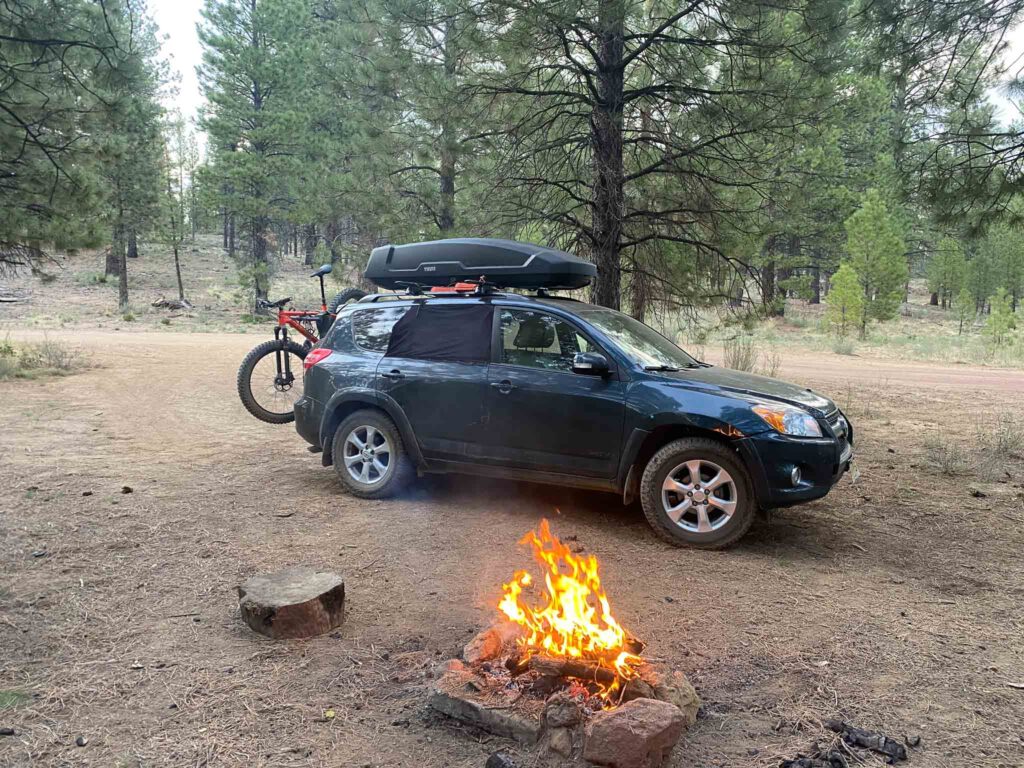
Public lands are among the best places you can camp. They’re under the name of Bureau of Land Management, National Forest, National Monument, or National Recreation Area. Practically, you can stay for as long you want. On paper there is a 14-day limit, but that isn’t enforced unless you’re in a high use area or are causing trouble. There’s a lot of public land available, primarily concentrated in the West. You can enjoy amazing spots here with the kind of views that make you drool. If it’s remote enough, there won’t be people around too! 4×4, AWD or all-terrain tires dramatically open up your options, but regular vehicles will do fine as well.
After using maps or signs to identify where public land is, start driving on a road within the boundaries. It will likely be graded gravel or dirt, passable to most vehicles. Some areas will have more unmaintained roads and others more paved roads though. Unless posted or regulated otherwise, you can sleep anywhere if you’re not blocking the road or damaging the land. This could be a parking lot, the shoulder, a pull-out, a dispersed camping area or even off the side of the road.
When in a parking lot or pull-out, it is poor form to sprawl with camping equipment or stay for a long time. Those areas are usually trailheads or viewpoints used by other people. The dispersed camping areas are the ideal places for full-out camping and long stays.
Dispersed camping areas are the best parts of public land. These areas often have designated campsites prepared. Those are visible as cleared ground and paths leading to them from off the side of the road. If these designated sites are present you should camp there.
Except for a few places, you are not allowed to drive cross-country over the terrain. You can only camp in the vicinity of the road. If there are no designated campsites though, you can leave the road to camp. Just make sure you don’t damage vegetation or sensitive ground and are reasonable with how far you drive. This is common in many desert and rarely-used areas. It’s not acceptable in most vegetated or forest areas though.
I find these lands using the public lands map overlay in the Gaia app, a backcountry GPS navigation app. Other apps include CalTopo and OsmAnd. Government websites offer maps of public land too which you can print out or download.
There are some caveats. Some areas have blanket rules banning camping in some way. The White Mountain National Forest in New Hampshire has such rules. They dictate that you need to camp far enough away from roads or parking lots. They do allow using a tent and camping in the woods. You just can’t camp in your vehicle because of the road and parking lot proximity.
In some camping areas, the land management agency may ask users to pay a fee. This is due to the special nature, high use or convenience of the spots. They may even provide campsite services in those cases. There are climber campsites in Bishop, Calif. and Indian Creek, Utah which charge a fee. There are places in Arizona popular with snowbirds that do so as well.
Outdoor Recreation Trailheads
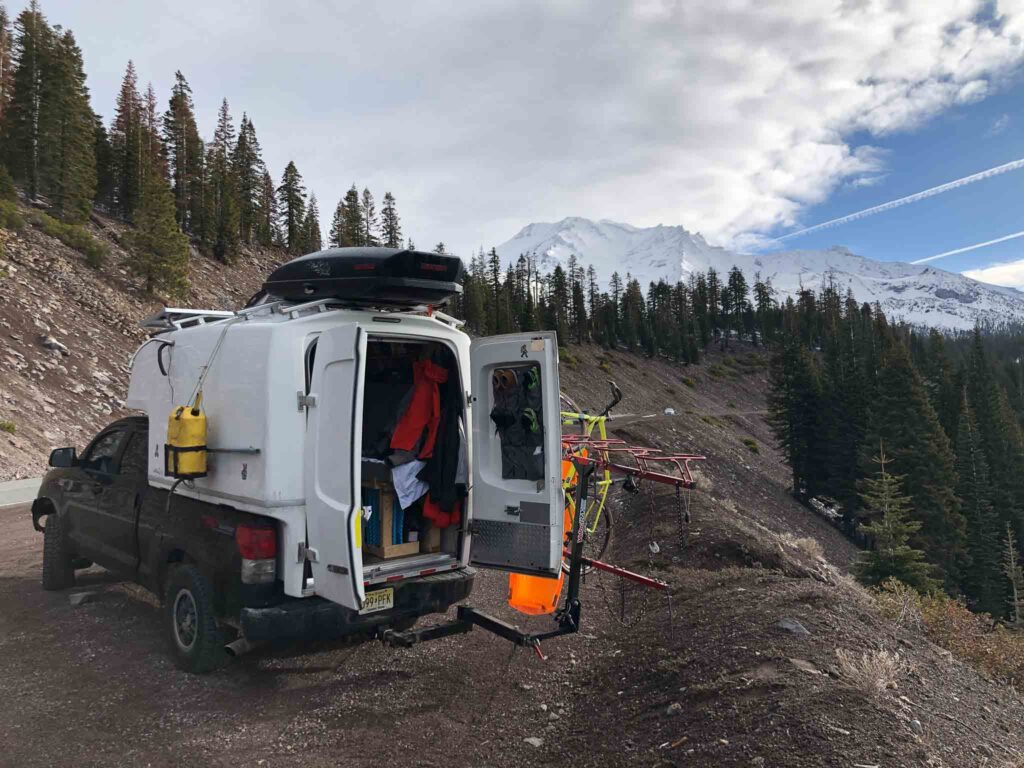
Many outdoor recreation trailheads are okay with you spending a night. This is especially true for trailheads that see overnight vehicles — backpacking for example. Other trailheads which only see day use, like mountain biking or climbing crags, won’t be as easy. You can still get away with it though if it’s not patrolled or signed otherwise.
Many trailheads fall under the public land umbrella. That makes camping okay by default unless regulated otherwise. If they do fall on public land though, you can often find dispersed camping areas. That would be more courteous unless you’re using the trailhead for recreation as well.
This will not work at National Park trailheads. There are places where rangers turn a blind eye or where it’s allowed, but unless you are confident of that it is best not to try. National Park Rangers are more than willing to issue a ticket for illegal camping.
Legal Street Parking

Legally parking on the street is the most versatile option. It can be done unless a local ordinance forbids sleeping in vehicles. Even with such ordinances, they are often difficult or illegal to enforce. Even without, there are many areas where it would be inappropriate or dangerous to do so. The best resources when deciding on an area are your intuition, the local dynamics and the presence of other vehicle-dwellers.
The most accepted parts of the country to street-camp are frequent traveler destinations, especially of the outdoor recreation variety. It’s also fine in large dense cities where the locals have bigger and crazier problems. Boston, New York, and Los Angeles for example. I wouldn’t do this where nobody does it, including the homeless population. For example, a small town in the South or certain parts of the Midwest would be no.
The first thing is to make sure the parking spot is legal. You don’t want to get a parking ticket. Or if the officer is nice, be woken up and asked to leave instead of one.
The second thing is to make sure the spot would be locally accepted. The easiest way is to drive around and observe where other people are sleeping on the street. You can then learn the local dynamics. Try to avoid sleeping in front of a residence or by a school. That’s an easy problem to solve though. You can find legal spots near businesses, industrial areas, parks, fields, and undeveloped areas. Those would be best.
The third thing is to figure out how long you can stay. This depends on local dynamics and parking legality. In heavy urban areas, you’re fine never moving so long as you’re parked legally. The locals use vehicles infrequently, and they have much bigger problems to deal with. A camper van on the street for a week in New York City won’t cause any problems. In places where people may perceive “possession” of the street — such as near houses or neighborhood parks — move around more often.
The fourth thing is to make sure the area is safe. If there are derelict RVs surrounded by trash that haven’t moved in months, stay away. If the area is run-down with people drinking on street corners, move on as well. Your gut feeling is the best resource here. Listen to it.
In urban areas, I’ve found the best places to stay are on well-trafficked streets. The presence of innocuous pedestrians and vehicle traffic deters most crime. Also, the more people that frequent an area, the less “possession” they perceive of the street and the fewer problems they have with you. It seems lopsided but it holds true.
Big Box Stores
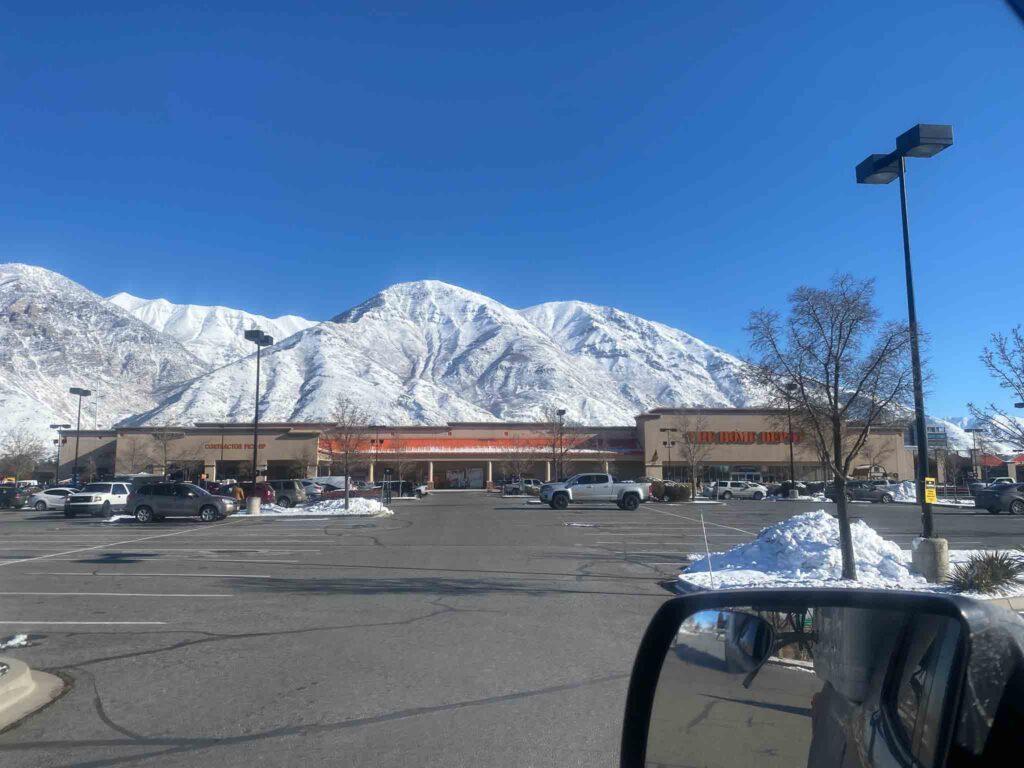
Big box stores include Walmart, Home Depot, Cabela’s, large gyms, grocery stores and 24-hour establishments. You can usually get away with a night. If you’re in areas of high use, it’ll be harder to find a business that won’t kick you out. Some stores have or have had policies of allowing vehicle camping. Some, especially Walmart, are now cracking down on this. When in doubt, observe the area for security, other campers, or “No Overnight Parking” signs.
Most stand-alone stores with large parking lots and underpaid staff are fine for a night. If it’s a 24-hour establishment, even better. In difficult areas, I’ve found Home Depot to be a reliable choice.
Your intuition goes a long way when deciding if a parking lot is good. Ask yourself the below questions. Does the area see a lot of use or abuse from other campers? Is the area safe? Could there be security? Are there other vehicles sleeping there? Can I be a 24-hour user? Is the staff too underpaid to care? These questions go a long way in helping you decide if it’s a suitable location.
Logging Lands
This applies mostly to Washington and Maine. Land managed by logging companies is good to spend a night if you aren’t in the way of logging trucks. To stay out of their way, don’t camp on the road or in truck turn-around spots. Try to camp off the road. You could also stay longer if the area is done with logging, or are far from the trucks. For the most part, loggers won’t care if you’re reasonable about it. If staying from dusk till dawn, you have more leeway since you won’t run into loggers at midnight.
I find logging lands using the same public lands overlay in the Gaia app. Even without maps, these areas are clear from the cut of the roads and the trees.
Be careful driving past an open gate here. That gate may have been temporarily open, and upon your departure, it may be shut. If entering after dusk and leaving before dawn, crossing a gate should be fine. I can’t imagine why a logger would show up at midnight to lock a gate. If staying longer though, make sure you’re in a location where your access to civilization can’t be blocked.
Sno-Parks
Sno-Parks are primarily an Oregon thing, but other states may have a similar concept as well. Unless signed otherwise you can camp here. In winter months you need a cheap permit for your vehicle, but late spring through late fall they’re free.
Ski Resorts and other Sporting Facilities
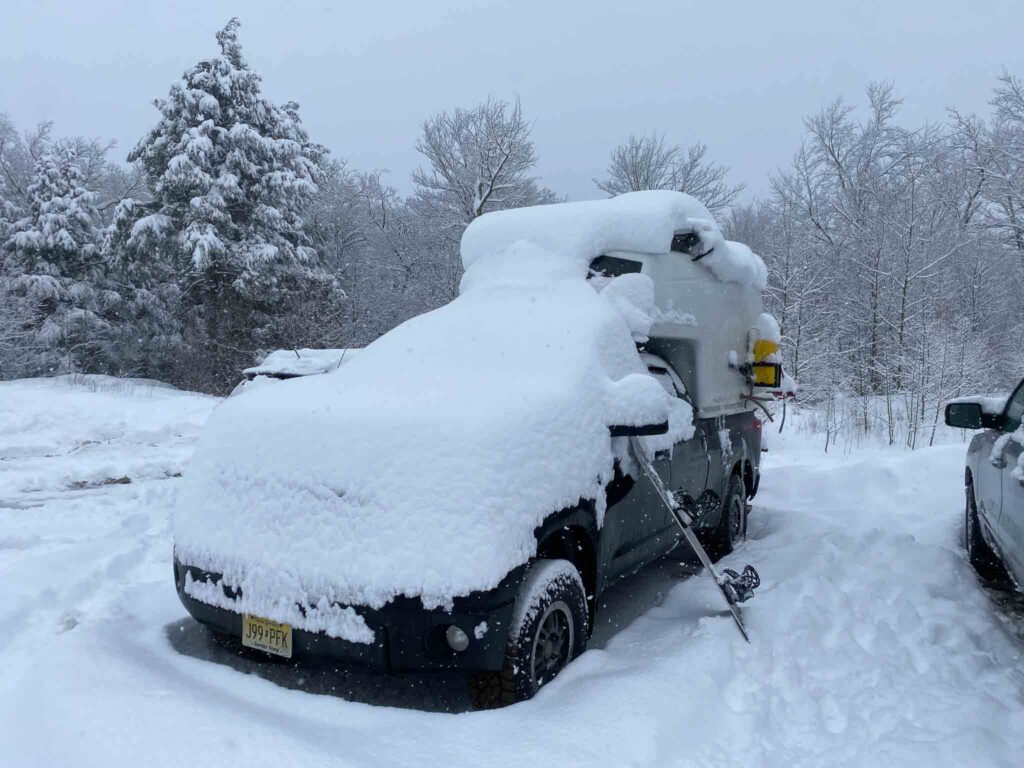
Some ski resorts allow overnight camping. Even if signed otherwise, you can still camp in accepted parts of the resort where you see other campers. A lot of ski resorts have a seasonal winter worker population, some of which live in a vehicle, so there might be parking lots to camp in if done so with respect.
Similar facilities covering other sports may allow overnight parking as well. For example: stables and horse-riding areas, skydiving, surfing, casinos and climbing gyms. Overnight camping in those places are usually meant for users or employees of those facilities. Unless you are one, it would be more respectful to find other places to sleep.
Other Natural Undeveloped Areas
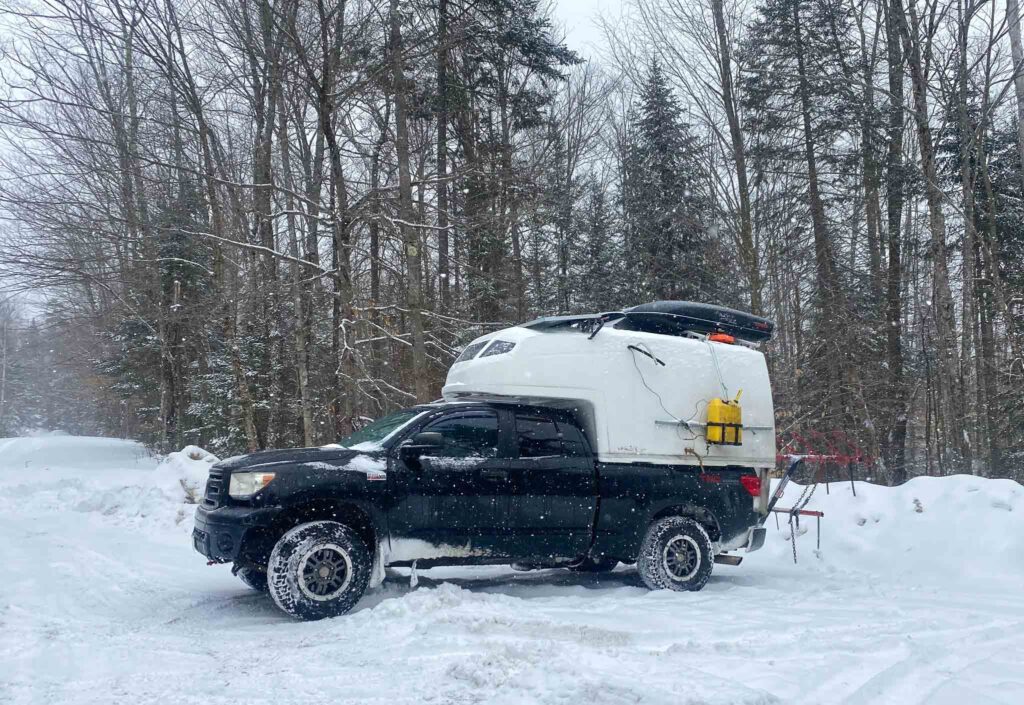
You are fine to spend a night in many undeveloped natural areas, even if it’s not federal public land. This would be in pull-outs, viewpoints, parking lots or off the roadside. It could be state land, county land, or empty parcels. You’ll find these to be okay if they don’t see heavy use and are safe from crime. If that’s true, no one will kick you out and nobody will care. Do note this won’t work as well for many city, neighborhood, or local parks.
Enter After Dusk, Leave Before Dawn
If you enter a parking spot after dusk and leave before dawn, you can camp almost anywhere. I can find a more accepted spot with the previous methods, but if in a pinch or wanting to save on gas money, this strategy works well. Just don’t be lax with your timing.
Additional Information
I’ve found park-and-ride lots are not safe to camp in. They’re far from people, close to cities, and have vehicles parked for a long time. This means that they’re the perfect target for thieves looking to steal vehicles or the contents of them.
I mentioned not driving past any open gates in the context of logging lands, but a similar issue happened to me in an Idaho Bureau of Land Management area. A dirt road had an open gate, as many of them do. I drove several miles on a remote path that seemed like it hadn’t seen tire tracks in years. I spent two days there. When I returned, the gate was locked! I had no signal and was in an area which didn’t see frequent visitors. I was able to go around the gate by driving cross-country, but I now carry an angle grinder just in case. If having to cut a lock, best to leave a note to the ranger so they don’t assume any malfeasance. I think this was rare though.
In a few cases, the local culture is such that nobody will care where you camp or how long you camp for. They only care that you’re respectful. This is the case in much of Alaska and some of Oregon, plus a few small outdoor towns across the country.
Final Thoughts
It’s important to be respectful when sleeping in your vehicle. All that’s needed is some common sense and courtesy. Improper and inappropriate actions affect the rest of the community ten-fold. This lifestyle is merely tolerated, not accepted by society. And the thing is, people don’t have problems with parked vehicles — they have problems with other people. As long as you strive to be a parked vehicle and nothing more, you won’t find problems.
Stealth doesn’t matter as much as everyone thinks it does. The only people who would care about vehicle-dwellers are law enforcement, security and nearby locals. It’s obvious if you’re using a vehicle for sleeping. You won’t fool law enforcement nor security. Locals may be less aware, but the spots and strategies covered are places where they won’t care despite that. If your vehicle does happen to be stealthy, don’t think of it as your shield — it’s not. Focus on sleeping in places where nobody would care, which this article details how to find.
The best way to improve at finding sleeping spots is practice. It’s like a sixth sense you need to develop. It does start off as difficult, but it gets easier over time. Spend enough time living like this and you’ll be able to find spots anywhere in the country to sleep in.
